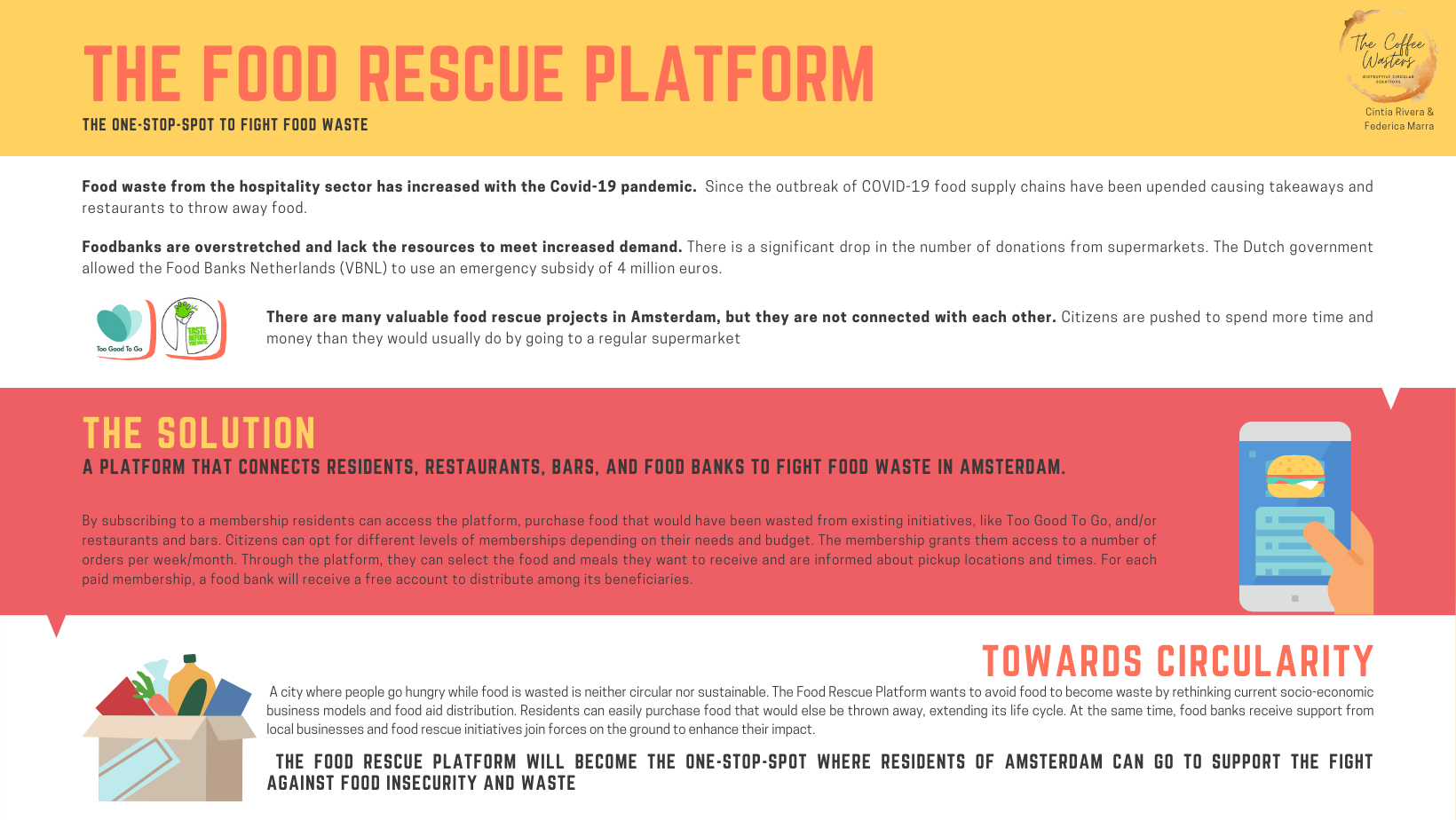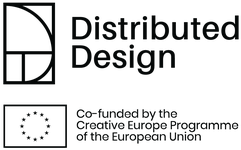Cities are potential engines of the transition towards a circular economy. The City of Amsterdam is one of the early adopters of the circular economy concept at city level. Closed loops, value generation, innovative business models, and modular designs – those are not only principles to guide the transition to circular cities, but also principles distributed designers have been working with for years. In our series Distributed Design for Circular Cities, we introduce you to some of the creative talents making an impact. In this episode, we interview Federica Marra & Cintia Rivera with their design studio The Coffee Wasters in Amsterdam.
Can you give us a description of your project?
The Food Rescue Platform (FRP) is a membership-based ‘one-stop-spot’ connecting HORECA, citizens, and food banks to fight food waste and insecurity in Amsterdam. It’s still in it’s concept phase, but it is exemplary for what we want to do with our design studio in formation. We call ourselves The Coffee Wasters, and we are solving urban challenges by combining design principles with circularity. FRP is our first prototype, in which we rethink business models and food aid distribution. We approach the challenge of food waste with a multi-layered solution, in which we want to bring together different actors to tackle environmental, as well as societal issues.
In what way is your work contributing to circular cities?
With FRP, we operate at the intersection between food waste and food insecurity. Research shows that in a city like Amsterdam, the number of people that don’t have consistent access to enough food for an active, healthy life because of a lack of money and other resources is growing. When working on circular cities, we also have to identify the elements that you are not immediately relating to the challenge. They say that 80% of your impact comes from 20% of your efforts. In all our future projects we will identify those overlapping factors, so we can include them in finding impactful solutions for circular cities.
What drives you personally to work on this project?
C: We met as co-workers at Rainforest Alliance, an international non-profit organization working in more than 60 countries at the intersection of business, agriculture, and forests. With 70% of the world population moving to cities, we believe that the future is urban and we are both keen on starting to make an impact on a local level too. I have a background in storytelling and project management, Federica is trained in design thinking, system thinking and UX design. I see myself as a hyperactive project starter, I also run a storytelling platform tackling racism and created a story map of Amsterdam tackling loneliness. Making a social impact brings me joy, and I love to use innovation as a way to make things simpler.
F: In that, we complement each other. I’ve always been working for sustainable organizations, and I love problem-solving in which I can put people and design in the centre. I’m eager to find ways to fix broken systemic designs. it’s not about replacing, it’s about designing something that works. There are a lot of initiatives popping up in the urban landscape, and we want to bring those actors together.
How might we make circularity the norm?

What we aim to do is make circularity more approachable. Most of the burden to make conscious and sustainable decisions falls on consumers. And what we have to acknowledge is that you need to have certain privileges to be able to make sustainable choices. We want to change that mindset, doing sustainable things shouldn’t be a difficult choice to make.
In the book The Upcycle, authors William McDonough and Michael Braungart state that if you design a product that produces waste, you are making a bad design. They see questions of resource scarcity and sustainability as questions of design. Sustainability is something you have to incorporate in every step of the process, not just at the end. That is compensation for the problems you’ve caused, instead of tackling the real problem. Consistency is one of sustainability’s best friends, we have to make big companies reliable too.
This year, French lawmakers have moved to ban short-haul internal flights where train alternatives exist, in a bid to reduce carbon emissions. We have to invest in solutions that make sustainable alternatives more attractive, like better infrastructure and subsidies to lower prices.
What is your biggest hope for the future and what can we all start (or stop) doing as of tomorrow to contribute to that?
Why wait till tomorrow when we can act now? Sustainability and circularity are partly a mindset, but we have our habits and just like in design, we should integrate this into our personal habits. ‘Think global, act local’ is a quote that urges people to take action in their own communities and cities and we fully support that.
Be the change you want to see. Everything you do is a decision, but we are aware it’s always a contextualized choice, people are the products of their stories. We know solutions can be overwhelming, so start with asking yourself what you can do in your own circle of influence. We urge you to become more of an activist. You don’t have to go out on the streets to demonstrate if that’s not you, there are other ways and micro-activism is also activism. The biggest lie you can have in your head is that you are too small to make an impact, or that someone else is already working on solving an issue and therefore not taking action.
—
Distributed Design for Circular Cities is part of our programme for Distributed Design, the exchange and networking hub for the European maker movement. Want to know more about Distributed Design for Circular Cities? Check all the Creative Talent interviews and mark Thursday, October 14 from 18.00-19.00 in your calendars for our event and livecast in Pakhuis de Zwijger.












